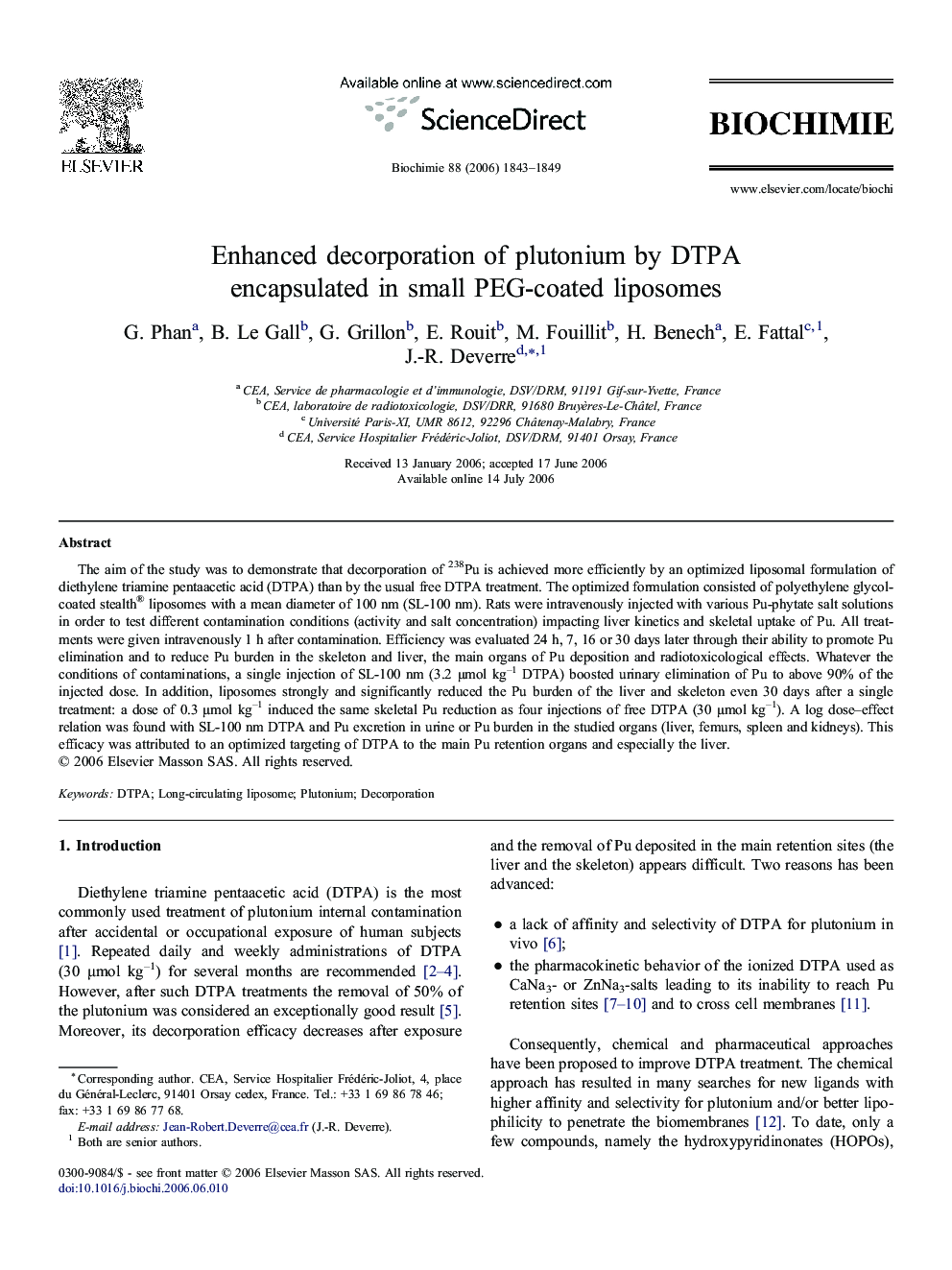| Article ID | Journal | Published Year | Pages | File Type |
|---|---|---|---|---|
| 1953461 | Biochimie | 2006 | 7 Pages |
The aim of the study was to demonstrate that decorporation of 238Pu is achieved more efficiently by an optimized liposomal formulation of diethylene triamine pentaacetic acid (DTPA) than by the usual free DTPA treatment. The optimized formulation consisted of polyethylene glycol-coated stealth® liposomes with a mean diameter of 100 nm (SL-100 nm). Rats were intravenously injected with various Pu-phytate salt solutions in order to test different contamination conditions (activity and salt concentration) impacting liver kinetics and skeletal uptake of Pu. All treatments were given intravenously 1 h after contamination. Efficiency was evaluated 24 h, 7, 16 or 30 days later through their ability to promote Pu elimination and to reduce Pu burden in the skeleton and liver, the main organs of Pu deposition and radiotoxicological effects. Whatever the conditions of contaminations, a single injection of SL-100 nm (3.2 μmol kg–1 DTPA) boosted urinary elimination of Pu to above 90% of the injected dose. In addition, liposomes strongly and significantly reduced the Pu burden of the liver and skeleton even 30 days after a single treatment: a dose of 0.3 μmol kg–1 induced the same skeletal Pu reduction as four injections of free DTPA (30 μmol kg–1). A log dose–effect relation was found with SL-100 nm DTPA and Pu excretion in urine or Pu burden in the studied organs (liver, femurs, spleen and kidneys). This efficacy was attributed to an optimized targeting of DTPA to the main Pu retention organs and especially the liver.
